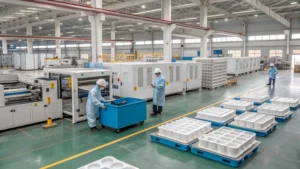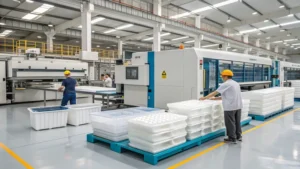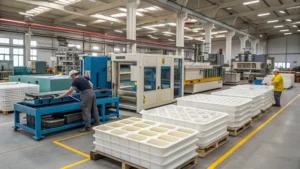
Thermoforming is a fascinating manufacturing process that transforms plastic sheets into a variety of products by heating them to a pliable state, molding them into shapes, and cooling them to set. You might know it from everyday items like food packaging or car dashboards, but there’s much more to this technique than meets the eye.
Thermoforming heats plastic sheets to shape them into products like packaging and automotive parts. It’s cost-effective for low to moderate production volumes1, versatile across industries2, and faster for prototyping, though it may result in uneven part thickness.
In this blog post, we’ll uncover the top 10 things you didn’t know about thermoforming, shedding light on its versatility, cost benefits, and unique applications3. Whether you’re a manufacturer, designer, or just curious, these insights will deepen your appreciation for this widely used process.
Thermoforming is only used for packaging.Falsch
While packaging is a major application, thermoforming is also used in automotive, aerospace, and medical industries for parts like dashboards, luggage bins, and surgical trays.
Thermoforming is more cost-effective than injection molding for large production runs.Falsch
For high-volume production, injection molding often becomes more cost-effective due to economies of scale, despite higher initial tooling costs.
- 1. What is Thermoforming?
- 2. Welche Materialien werden üblicherweise beim Thermoformen verwendet?
- 3. Was sind die einzelnen Schritte des Thermoformverfahrens?
- 4. What are the Key Factors in the Thermoforming Process?
- 5. Was sind die Anwendungen des Thermoformens?
- 6. What are the Differences Between Thermoforming and Other Plastic Forming Processes?
- 7. Schlussfolgerung
What is Thermoforming?
Tiefziehen4 involves heating a plastic sheet until it’s soft and pliable, then forming it into a specific shape using a mold—often with the help of vacuum or pressure—and cooling it to create a finished product. It’s a go-to method for producing everything from blister packs to refrigerator liners due to its simplicity and adaptability.

-
Full Technical Name: Thermoforming
-
Common Aliases: Plastic thermoforming5, Vakuumverformung6 (a subset), pressure forming
-
Core Principles: Heating to soften, molding to shape, cooling to solidify (Wikipedia - Thermoforming).
Welche Materialien werden üblicherweise beim Thermoformen verwendet?
Thermoforming’s versatility shines through its compatibility with a variety of thermoplastics, each chosen for properties like strength, clarity, or chemical resistance.

Common thermoforming materials include PET, PVC, ABS, PS, and PP, each selected for specific traits like clarity or durability in applications from packaging to automotive parts.
| Material | Eigenschaften | Gemeinsame Anwendungen |
|---|---|---|
| PET | Clarity, strength | Lebensmittelverpackungen, Schalen |
| PVC | Langlebigkeit, chemische Beständigkeit | Medical trays, enclosures |
| ABS | Toughness, impact resistance | Automobilteile, Elektronik |
| PS | Lightweight, easy to form | Disposable packaging, cups |
| PP | Chemical resistance | Automotive, medical devices |
Polyethylenterephthalat (PET)
PET stands out for its clarity and strength, making it a favorite for food packaging like trays and beverage containers. Bonus: it’s recyclable!
Polyvinylchlorid (PVC)
PVC’s durability and chemical resistance make it perfect for medical trays and industrial components that need to withstand harsh conditions.
Acrylnitril-Butadien-Styrol (ABS)
ABS brings toughness and impact resistance to the table, ideal for automotive parts and consumer electronics that require durability.
Polystyrol (PS)
Lightweight and easy to shape, PS is commonly used for disposable packaging and food service items like cups and lids.

Polypropylen (PP)
PP offers excellent chemical resistance, making it a top pick for automotive components and medical devices.
Thermoforming can be done with a variety of plastic materials.Wahr
Thermoforming works with many thermoplastics, including PET, PVC, ABS, PS, and PP, each suited to different needs.
All thermoforming materials are equally suitable for all industries.Falsch
Material properties like clarity or chemical resistance make some better suited for specific applications than others.
Was sind die einzelnen Schritte des Thermoformverfahrens?
Die Tiefziehverfahren7 is a streamlined sequence of steps that turns a flat plastic sheet8 into a functional 3D product.
Thermoforming involves heating a plastic sheet, forming it into a mold using vacuum or pressure, cooling, trimming, and finishing—each step critical for quality and precision.
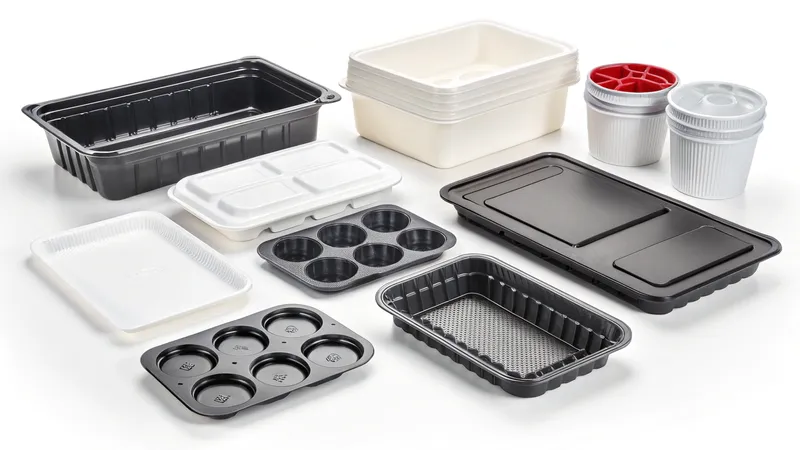
Heizung
The plastic sheet is heated to a pliable temperature (typically 100–600°F, depending on the material) to make it soft and moldable.
Bildung von
The heated sheet is stretched over or into a mold, shaped by vacuum, pressure, or mechanical force, depending on the method used.

Kühlung
The formed plastic cools—often aided by mold cooling channels9—to lock in its new shape and ensure stability.
Beschneiden
Excess material is trimmed off using tools like CNC routers to finalize the product’s edges and shape.
Fertigstellung
Optional steps like printing or assembly add functionality or branding to the finished piece.
Thermoforming always results in uniform thickness across the part.Falsch
Stretching during forming can lead to thinner areas, especially in deeper sections.
Precise temperature control is crucial in thermoforming.Wahr
Temperature affects pliability and quality, making precise control essential to avoid defects.
What are the Key Factors in the Thermoforming Process?
Several factors determine the success of a thermoformed product, from material choice to mold design.
Key factors in thermoforming include Materialauswahl10, Temperaturkontrolle11, Formgestaltung12, and forming method, all impacting the final product’s quality and performance.

Auswahl des Materials
Picking the right thermoplastic is vital—each material offers unique benefits tailored to specific uses.
Temperaturkontrolle
Too hot or too cold, and you’ll get defects. Precise heating ensures the plastic forms correctly without warping.
Formenbau
The mold’s shape and features (like undercuts or textures) dictate the part’s complexity and quality.
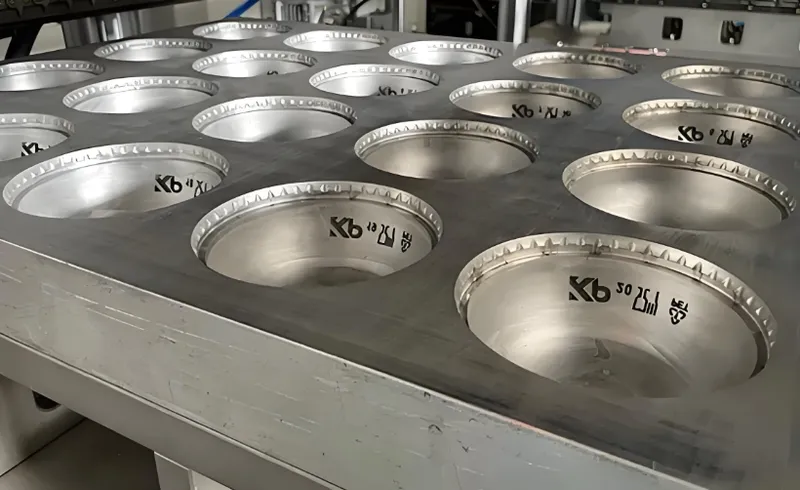
Formgebungsverfahren
Vacuum forming is simple and cost-effective, while pressure forming offers more detail—method matters!
Mold design is a critical factor in thermoforming.Wahr
The mold shapes the part and determines its detail and quality.
All thermoforming methods produce the same level of detail.Falsch
Pressure forming provides higher detail than vacuum forming.
Was sind die Anwendungen des Thermoformens?
Thermoforming’s reach extends far beyond what you might expect, serving industries with diverse needs.
Thermoforming is used in packaging, automotive, aerospace, and medical fields for products like trays, dashboards, and surgical enclosures, thanks to its versatility and cost-effectiveness.

Verpackung
Think blister packs and clamshells—thermoforming excels at creating protective, eye-catching packaging.
Automobilindustrie
Lightweight dashboards and door panels? Thermoforming delivers durability without the heft.

Luft- und Raumfahrt
Large, lightweight parts like luggage bins make thermoforming a hit in aerospace design.
Medizinische
Sterile trays and equipment housings benefit from thermoforming’s precision and material options.
Das Thermoformen ist nur für kleine Teile geeignet.Falsch
It can produce large parts like automotive panels, up to 84\
Thermoforming is widely used in the medical industry.Wahr
Its ability to create sterile, precise products makes it invaluable in healthcare.
What are the Differences Between Thermoforming and Other Plastic Forming Processes?
Thermoforming isn’t the only game in town—here’s how it stacks up against injection molding and blow molding.
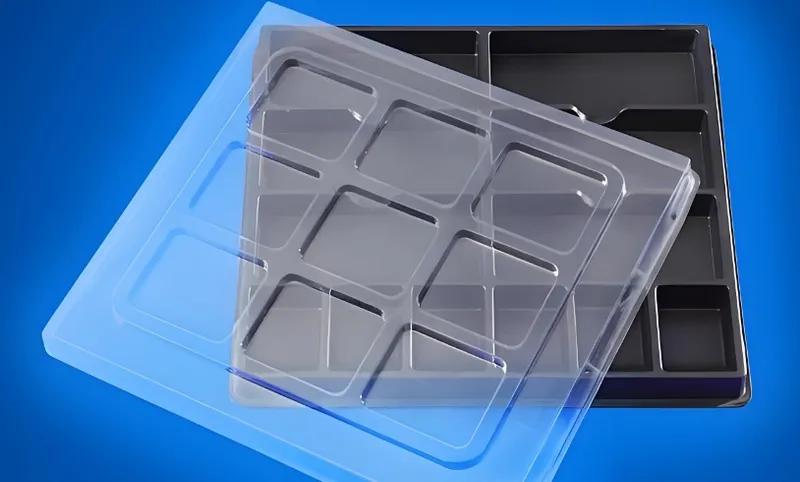
Thermoforming offers lower tooling costs and faster prototyping than injection molding but may produce more waste and less precision for complex parts.
| Aspekt | Tiefziehen | Spritzgießen | Blasformen |
|---|---|---|---|
| Werkzeugkosten | Lower (1/2 to 1/5 of injection) | Higher, complex tooling | Moderate, size-dependent |
| Produktionsgeschwindigkeit | Faster for prototypes, small runs | Slower setup, faster mass production | Moderate, hollow parts focus |
| Verwendung des Materials | More waste from trimming | Precise material use | Efficient for hollow shapes |
| Flexibilität bei der Gestaltung | Great for large, simple parts | Best for complex, detailed parts | Limited to hollow designs |
Werkzeugkosten
Thermoforming’s molds are cheaper and quicker to make, perfect for smaller runs.
Produktionsgeschwindigkeit
Need a prototype fast? Thermoforming’s your friend—samples in 8–10 weeks.
Verwendung des Materials
Trimming means more waste compared to injection molding’s precision.
Flexibilität bei der Gestaltung
Thermoforming shines with large parts; injection molding wins for intricate details.
Thermoforming allows for faster prototyping than injection molding.Wahr
Simpler tooling means quicker setup and prototype production.
Thermoforming is better for high-volume production than injection molding.Falsch
Injection molding’s per-part costs drop with scale, outpacing thermoforming.
Schlussfolgerung
Thermoforming is more than just a manufacturing process—it’s a versatile, cost-effective solution that powers industries from packaging to aerospace. With its ability to work with diverse materials, produce parts quickly, and adapt to complex designs, it’s no wonder thermoforming is a hidden gem in production. Next time you open a clamshell package or sit in a car, you might just be experiencing thermoforming in action!
-
Explore this link to understand how cost-effective manufacturing can optimize production and save resources in various industries. ↩
-
Discover how thermoforming's versatility can benefit multiple sectors, enhancing product design and functionality. ↩
-
Learn about the innovative uses of thermoforming that go beyond traditional products, showcasing its adaptability and creativity. ↩
-
Explore this link to understand the detailed process and applications of Thermoforming in various industries. ↩
-
This resource provides insights into the advantages of Plastic thermoforming, enhancing your knowledge of its applications. ↩
-
Learn about the unique aspects of vacuum forming and its specific applications in the industry by visiting this link. ↩
-
Explore this link to gain a deeper understanding of the thermoforming process and its applications in manufacturing. ↩
-
Discover the various types of plastic sheets suitable for thermoforming, enhancing your knowledge of material selection. ↩
-
Learn about the importance of mold cooling channels in ensuring product quality and stability during thermoforming. ↩
-
Understanding material selection is crucial for optimizing thermoformed products. Explore this link to enhance your knowledge. ↩
-
Temperature control is key to avoiding defects in thermoforming. Discover insights on maintaining optimal conditions. ↩
-
Effective mold design is essential for product quality. Learn more about the principles that guide successful designs. ↩



